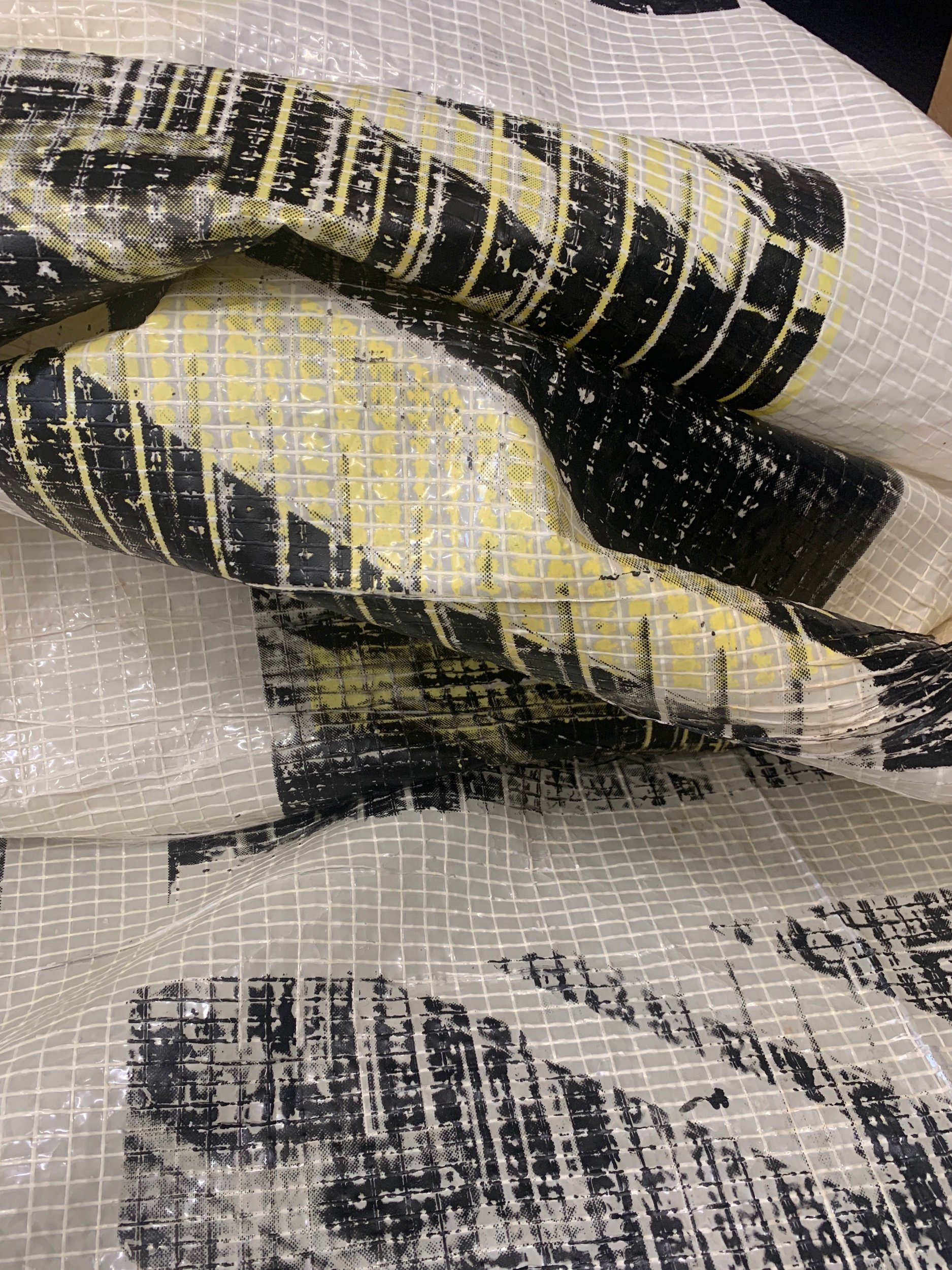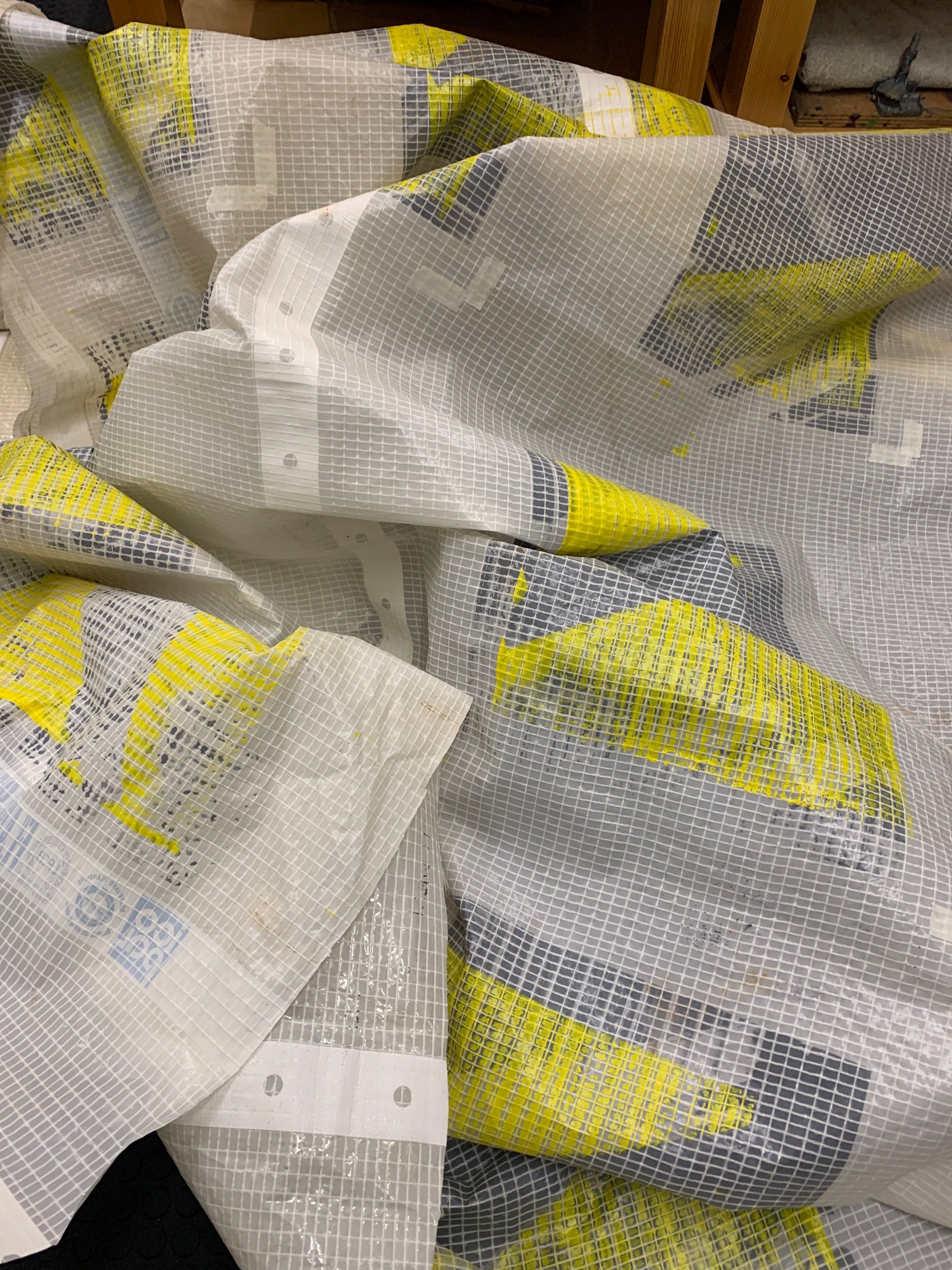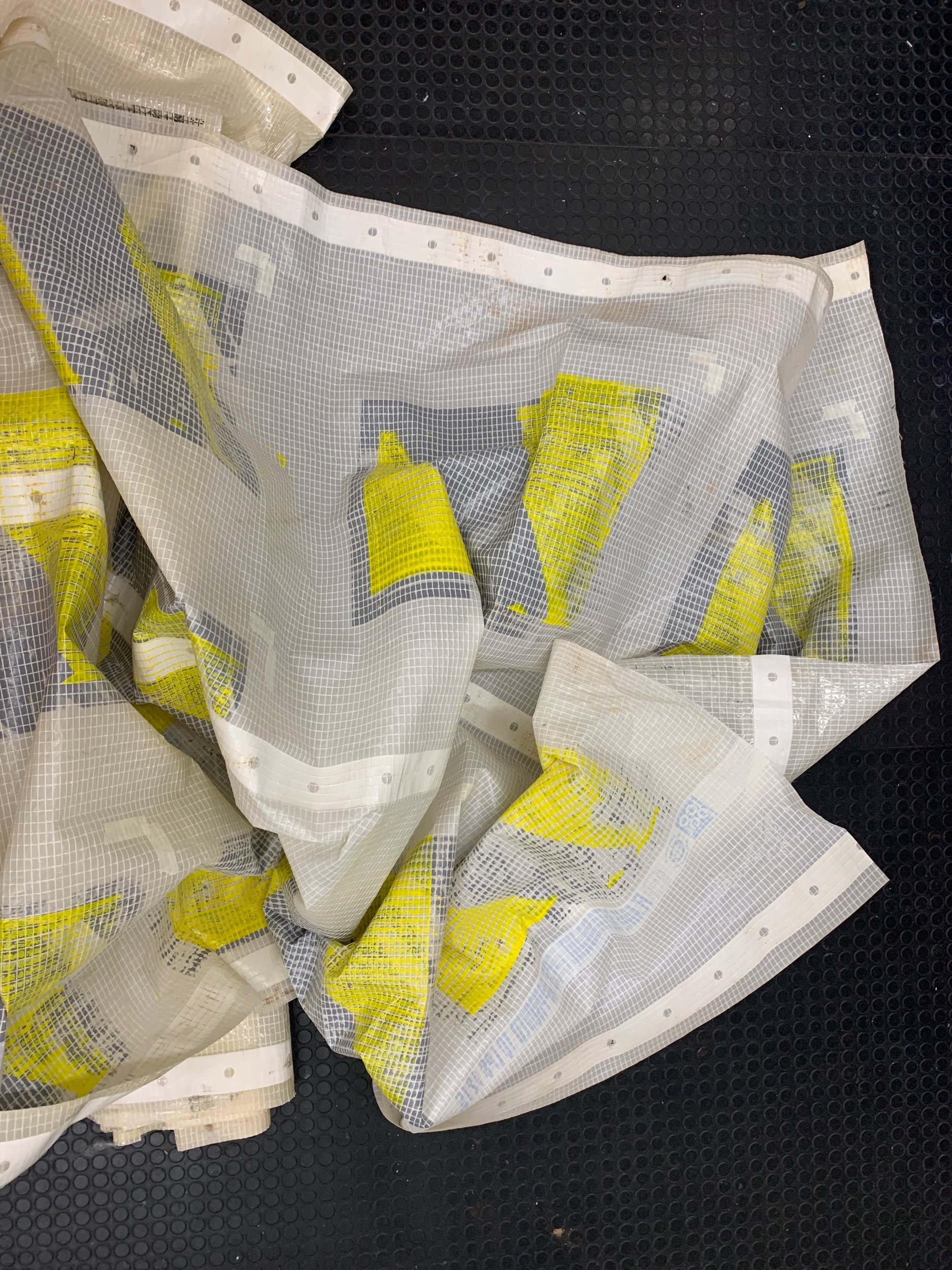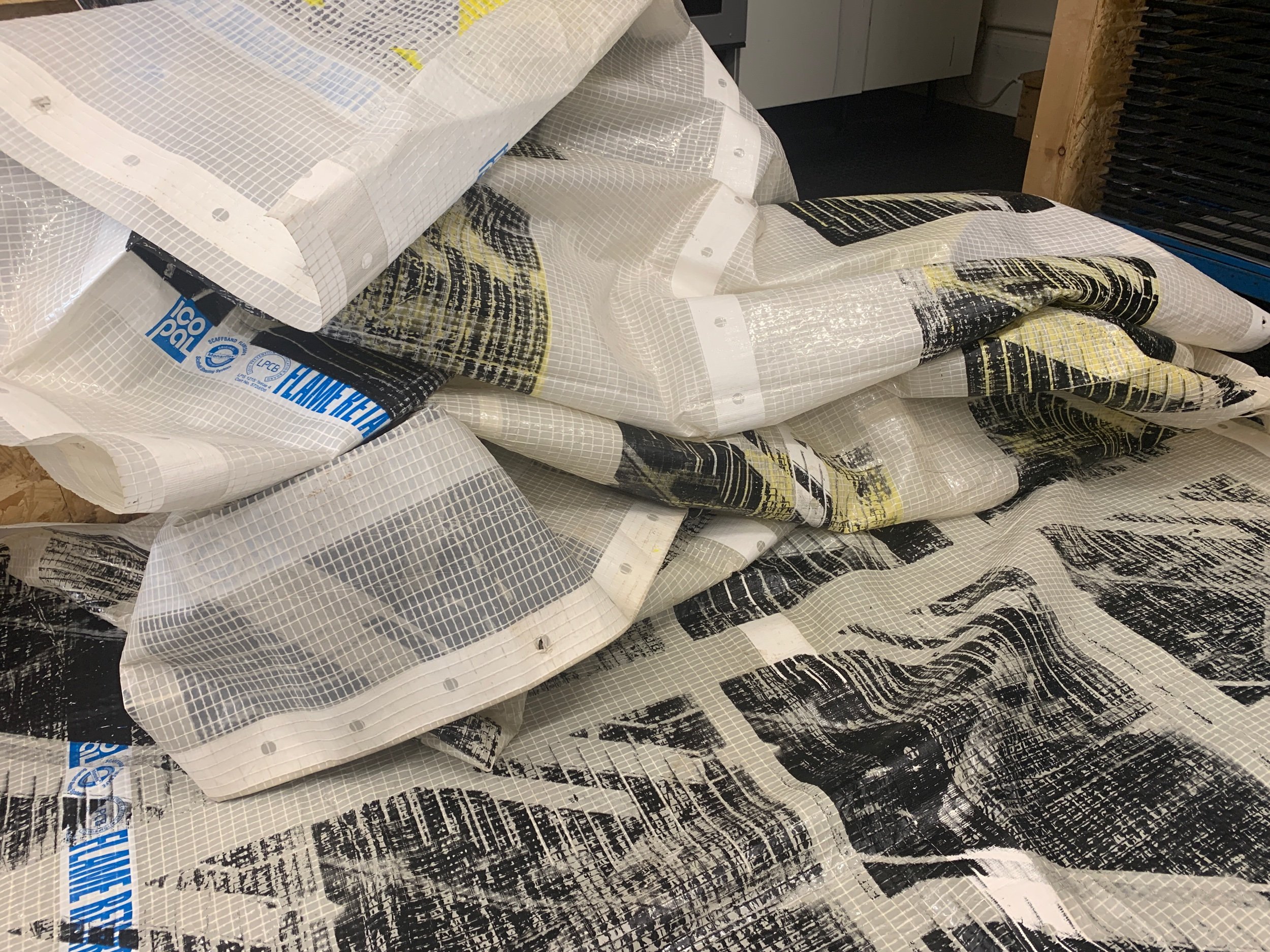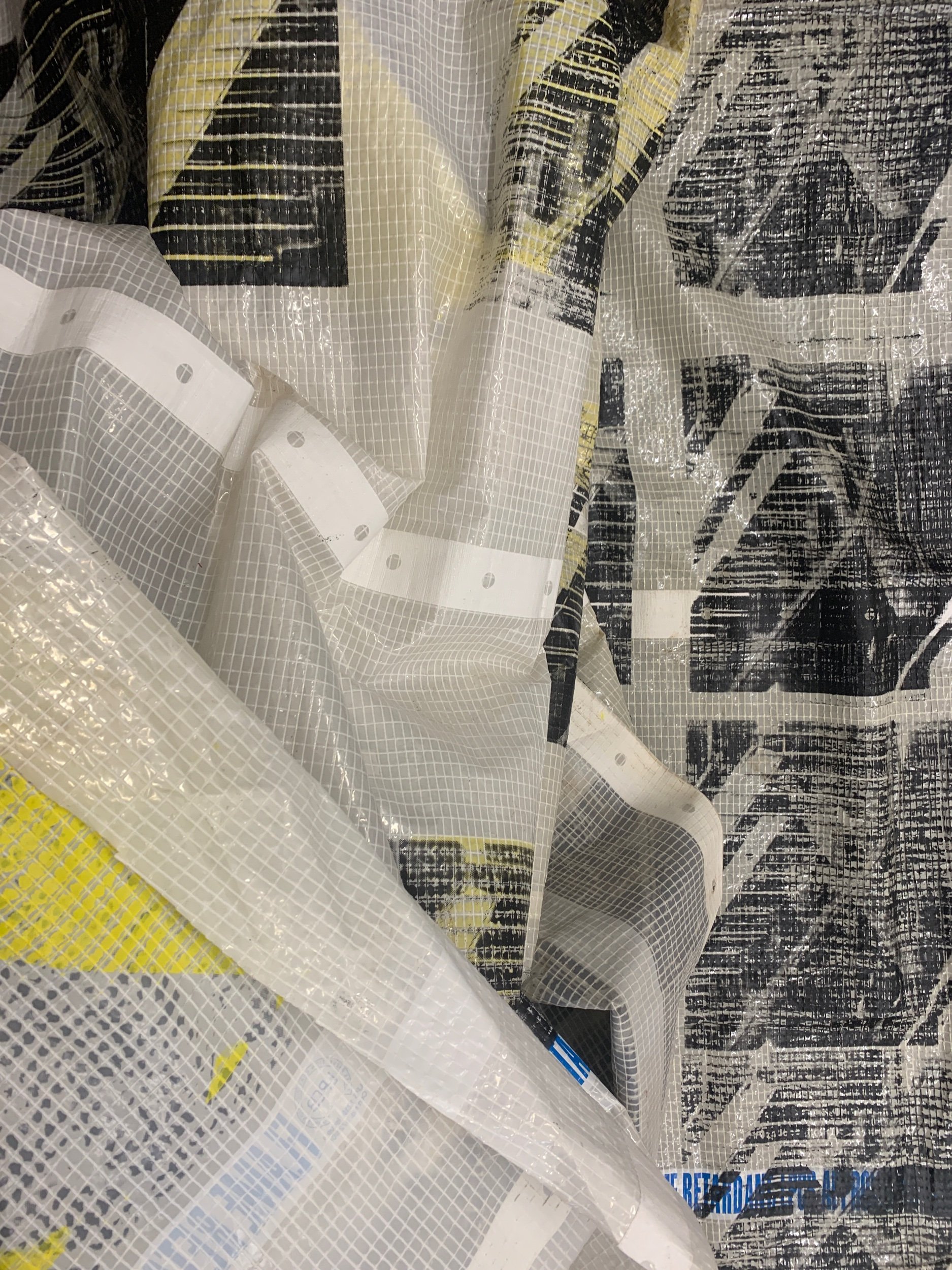Collapse print
Continuing with the theme of printing on to materials that are not precious I have begun to test out ideas that bring in the collapsed form. For now this consists of printed materials that are suspended & then dropped so that it falls & piles up on the ground. This piled form will become the basis of the finished or displayed print.
This work has roots from several areas of my practice & was set into motion when I saw the collapsed form in the image below. It shows several hundred metres of plastic sheeting that had tumbled from above & formed in this folded mass on the ground.
This collapsed plastic taps into several veins that have formed much of my inspiration as an artist. It resembles the violent act of destroying buildings, one such historical spectacle being the destruction of Pruitt Igoe. So perfectly captured from all angles, widely televised the footage of this demolition was used in the epic 1982 movie ‘Koyaanisqatsi’. So renowned was this destruction that it was dubbed the failure of modern architecture. This huge tale of mass housing being so devastatingly unsuccessful in part due complex social, geographic & architectural issues, culminated in the very public violence of controlled explosions. In an unfortunate twist of fate the architect of Pruitt Igoe, Minoru Yamasaki, was also the architect of the World Trade Centre, which was also very publicly destroyed for the world to see. This link to the twin towers ties in with my own early fascination with modernist architecture. As a young person I had a poster on my bedroom wall of the New York skyline with the towers front & centre. I would stare at the buildings windows & tall box forms against the skyline every day, other skyscrapers looking puny in comparison, the scale was mind blowing. Then at 15 years old the images of September 11, 2001 were seared into my brain weeks of tv coverage. At such a formative time in my life where I was discovering art & forming opinions certain elements from this time have fed into the practice I have now.
Adding to those things in forming this work are the restraints I put on my practice such as, resourcefulness, a low budget, repeating process, labour & limiting the creation of waste. I would also consider my being queer & working class playing a role in the formation of this work as I battle with how to present it. Having an interest in what might typically be perceived as a masculine topic - concrete, building materials, brutal & modernist architecture, manual labour, factories & car parks seems at odds with my nature to introduce bright colours, folds, tender placements or a want to preserve & look after materials - which could be perceived as feminine traits. The balance of masculinity & femininity in me needs to come through as I don’t want to deny either of these traits that I have. This is all assuming that you subscribe to masculine or feminine activities? Either way with them both being present & me being aware of it allows me to introduce a tension between them as I form ideas around making & displaying.
One further trait of my practice which is allowed to show through in this work is the natural behaviour of a material. By introducing the printed image to something that might naturally end up in a pile on the floor, I am able to explore sculptural printed forms. This, by extension brings into conversation what we normally perceive about printed work & how we value it. In this work I take hours of production & let it fall into a pile on the ground.
These images help to demonstrate the intricate folds & creases that form when this material is left to shape its self with the help of gravity. It is a site accurate material that perfectly describes what can happen to the architecture that is printed onto it.
Left to decay. Reduced to a pile. Taken away in a skip.


